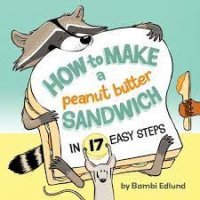"As I lay me down to take my rest
I see that it's just dust in the wind"
-- Mark "Moogy" Klingman (1950-2011)
"The plain bordering the Rockies, despite its flatness, is still more than a thousand feet above sea level. It is a dry place: it receives no more than twenty inches of rain and snow a year, about half of what Georgia, Maine, or Oregon gets.
"Bison found the grass. Herds grew until there were tens of millions of bison.
"American Indians found the bison and made them the center of their culture, using them for food, clothing, and shelter. The Indians, the buffalo, the land, and the weather existed in a balance for more than a thousand years.
"Pioneers from the settled, eastern United States came to the plains in the nineteenth century. By 1876, they had pushed the Indians into reservations and slaughtered millions of bison. Ranchers and cattle replaced the Indians and buffalo.
"Ranchers were sure that the 'immensity of grass' that had supported the bison would sustain cattle. In the southern plains nearly eight hundred miles of barbed-wire fence penned in about 150,000 head of cattle.
"But cattle lacked the sturdiness of bison, and the summer heat and winter blizzards wiped them out.
"The ranchers' hard luck didn't darken their sales pitch whenthey decided to unload the land: farmers bought, somehow overlooking that the pledges of wealth came from the failed ranchers."
Want the real dirt on the Dust Bowl? For more than a decade the quality of Don Brown's picture book nonfiction and biographies for children have made him someone whose new books I automatically and excitedly sit down to read whenever they come along.
Brown's latest work, THE GREAT AMERICAN DUST BOWL, is no exception. As you can see (above), he is able in a couple of hundred words to provide a solid foundation for understanding the historical and geographic factors that would eventually lead up to the Dust Bowl and the terrible dust storm in 1935 that he portrays here in haunting images and interesting fact-filled text.
"'I thought it was the last day of the world.'"
Brown's narrative about the historic dust storm is so much more powerful because of his thorough researching which is documented in a Selected Bibliography and Source Notes.
Brown's account of these dust storms focuses in large part on crazy weird facts that are so entertaining and ripe for sharing with friends. For instance, the fact that kids ended up with brown-colored snowmen. That ceilings in some houses collapsed "from the weight of dust that had gathered in the attic." That "birds and jackrabbits and tumbleweeds all ran in front of the storm." That the dust traveled to and fell upon Chicago, Atlanta, Boston, Washington, D.C., and New York City. These are the sort of fascinating facts that provide a real grasp of what it was like and how immense it was.
"Men stood by their fences and looked at the ruined corn, drying fast now, only a little green showing though the film of dust."
-- from THE GRAPES OF WRATH by John Steinbeck
There are some amazing pieces of American literature that are set in the days of the Dust Bowl. Young readers who are turned onto Don Brown's eye-catching introduction to this historic disaster -- which stemmed from the missteps of man and the unforgivingness of nature --will be far more interested and prepared when it comes time to read OUT OF THE DUST or THE GRAPES OF WRATH.
80 pages 978-0-547-81550-3
Book Pairing: Pair this book with Out of the Dust by Karen Hesse






